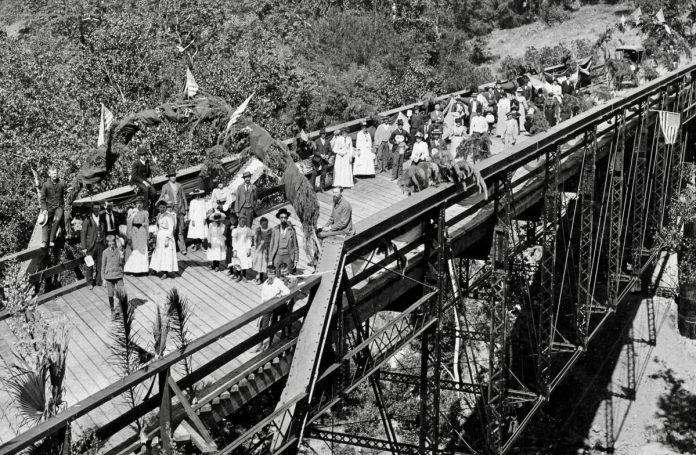
The narrow passage in the upper Arroyo Seco was referred to as Devil’s Gate by early Pasadena residents because the profile of a devil’s face appears on the cliff at the right.
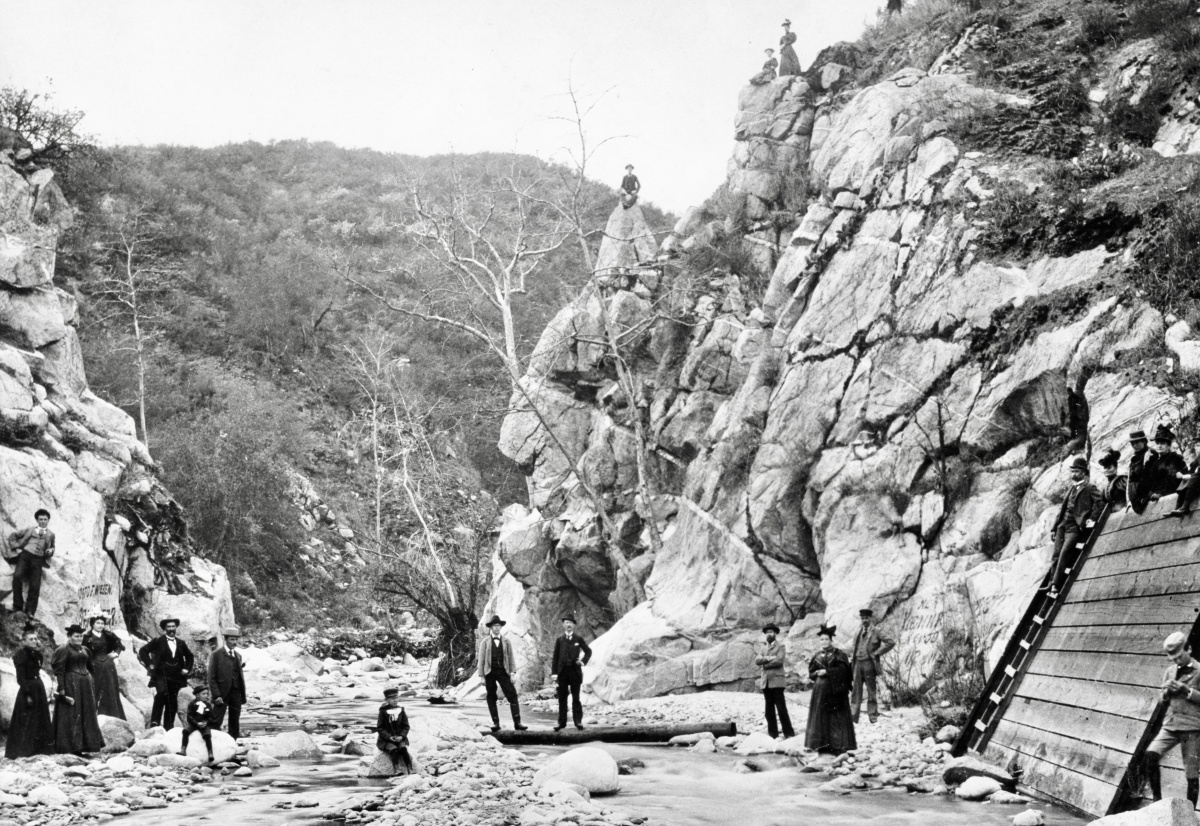
In the photograph above, a man sits on top of the devil’s horn. The granite outcropping was a favorite community gathering spot. Local area residents would pack lunches for their family picnics at Devil’s Gate.
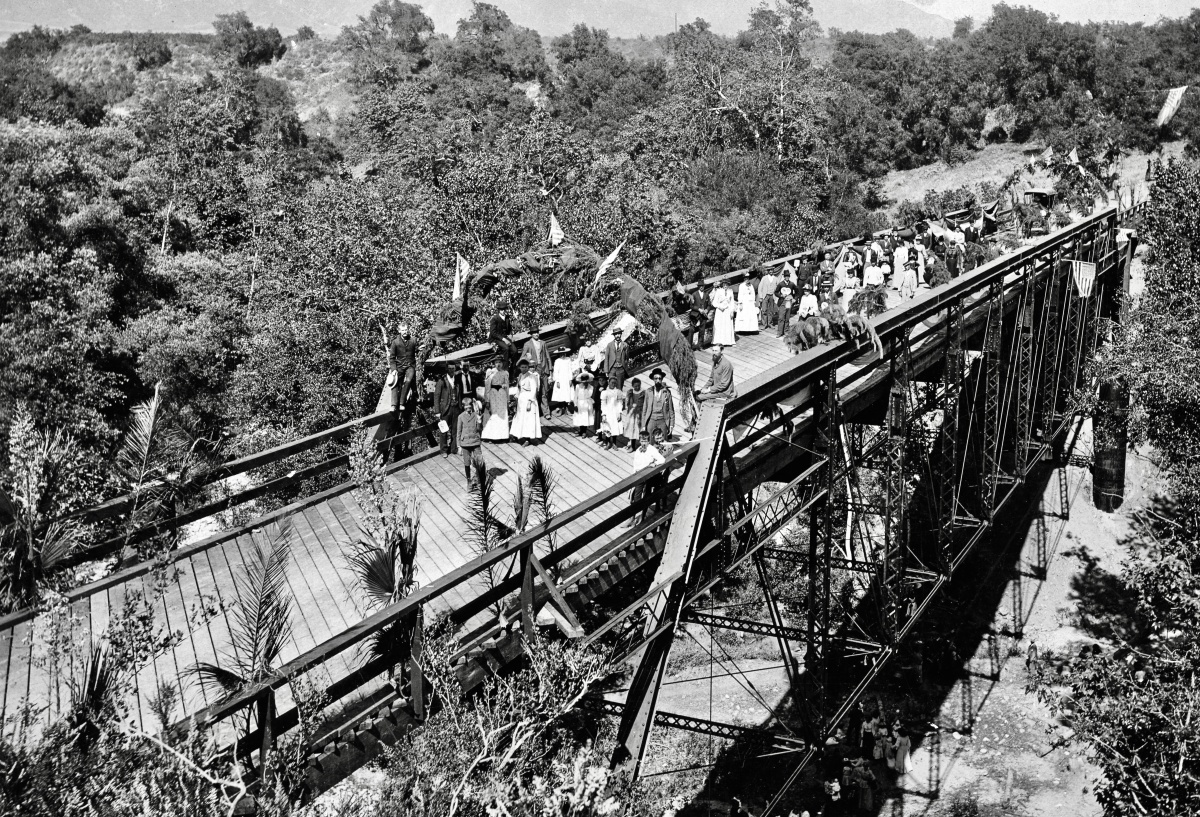
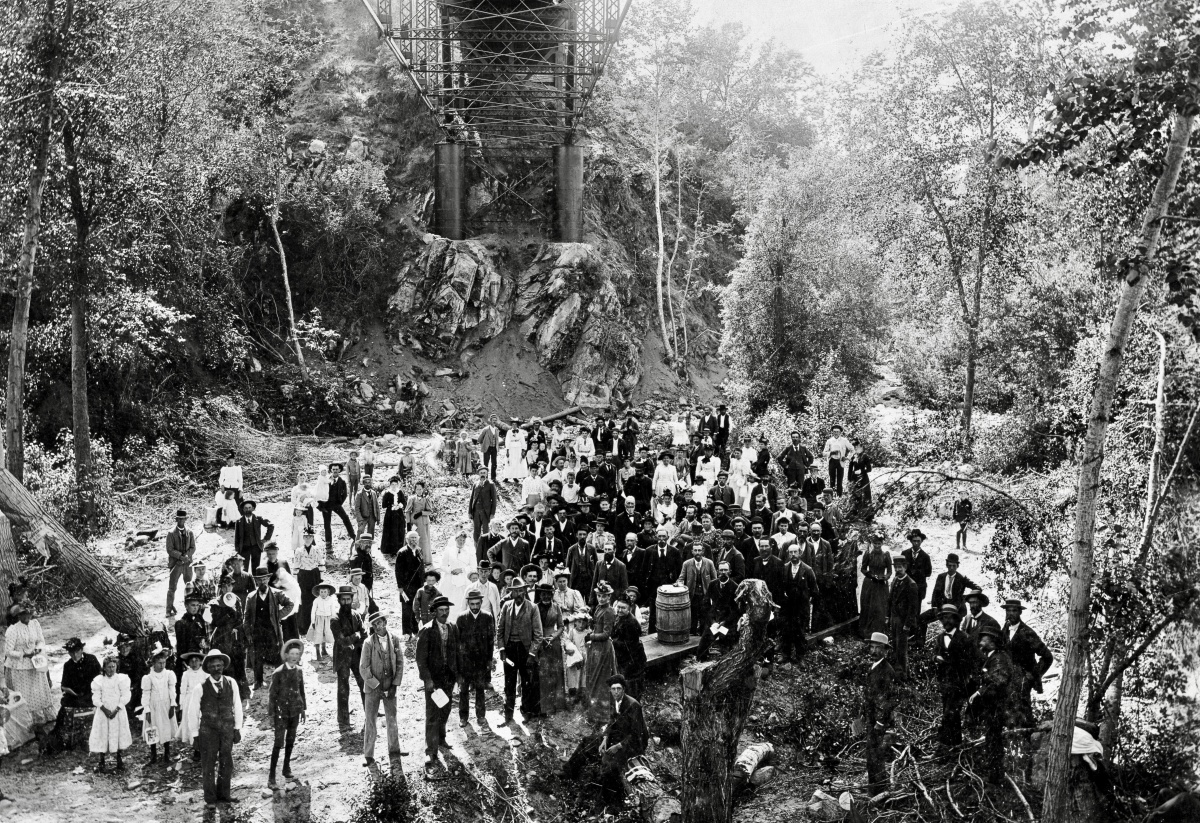
In 1893, Crescenta Valley and Pasadena residents gathered to celebrate the grand opening of the first bridge to cross the Arroyo Seco at Devil’s Gate. The bridge became a vital link between Crescenta Valley and the City of Pasadena and San Gabriel Valley.
Community picnic (photo above): Ms. Ameretta Lanterman (first to the left of the keg) is the grandmother of community leader and California Assemblyman, Frank Lanterman.

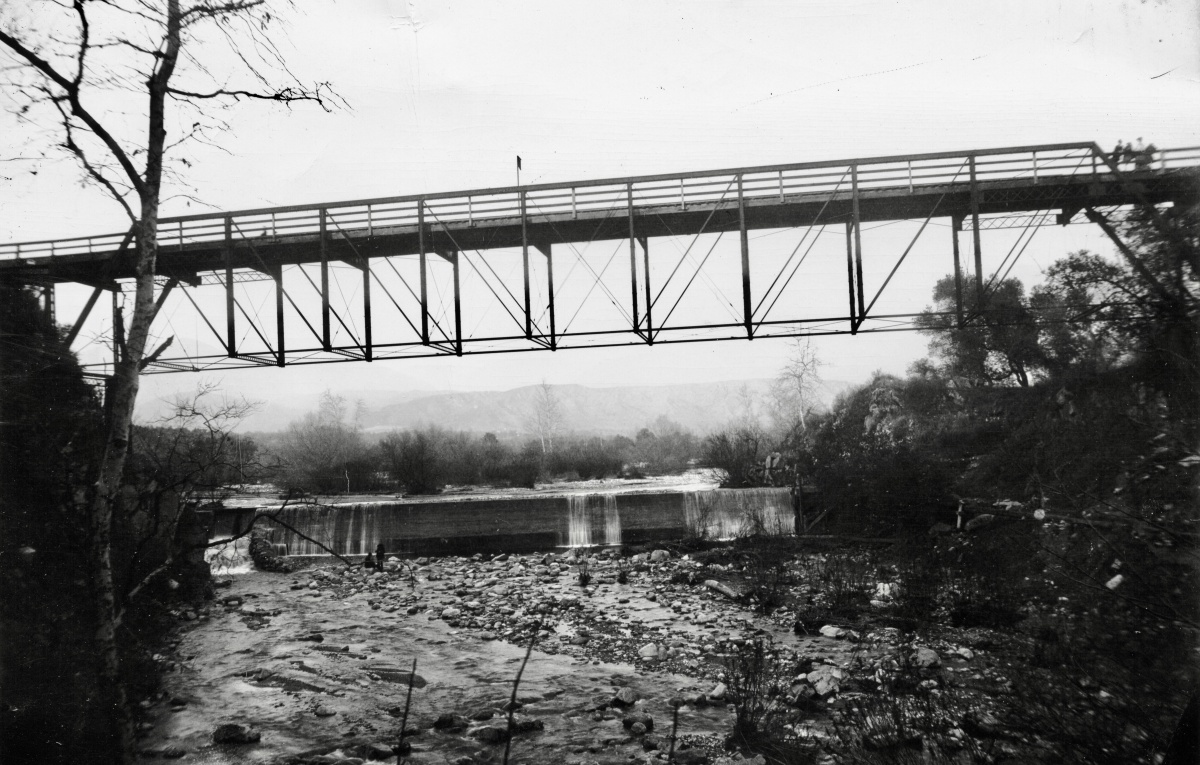
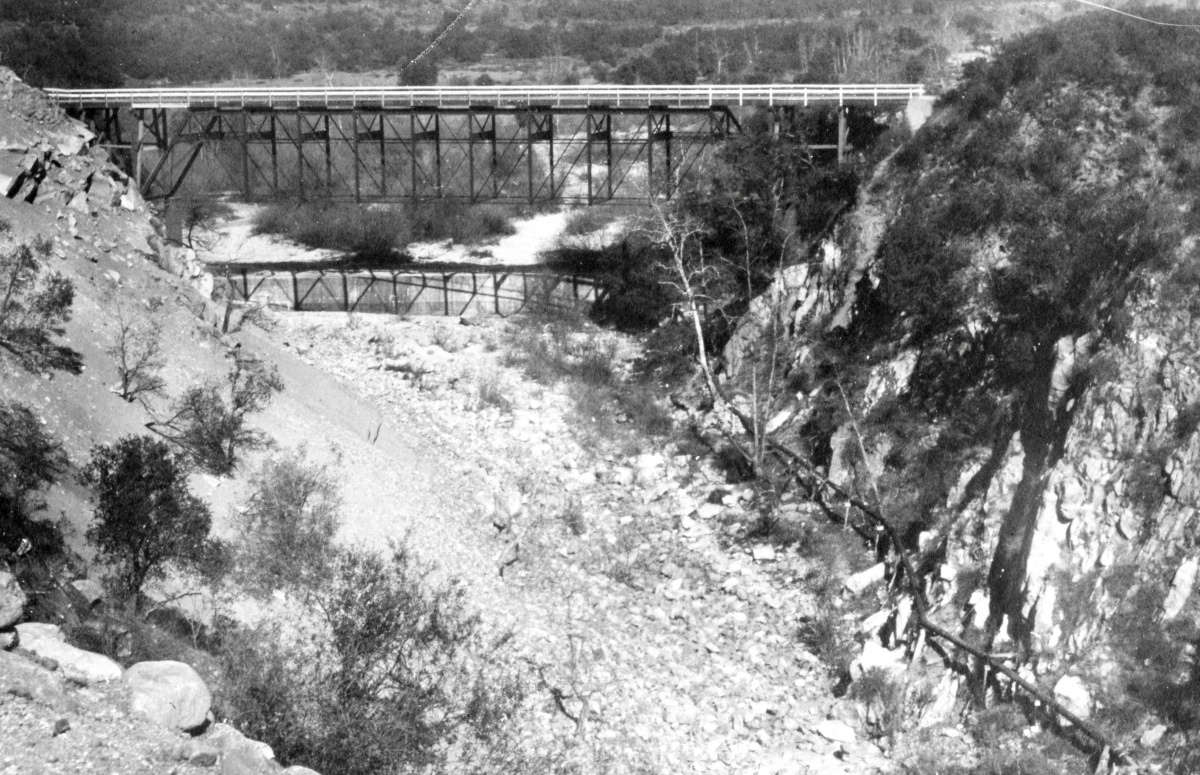
In 1920, flood engineers built a dam at Devil’s Gate. With a height of 103 feet and a length of 252 feet, the concrete dam replaced the wood-planked bridge as the primary bridge crossing between Pasadena and the Crescenta Valley.
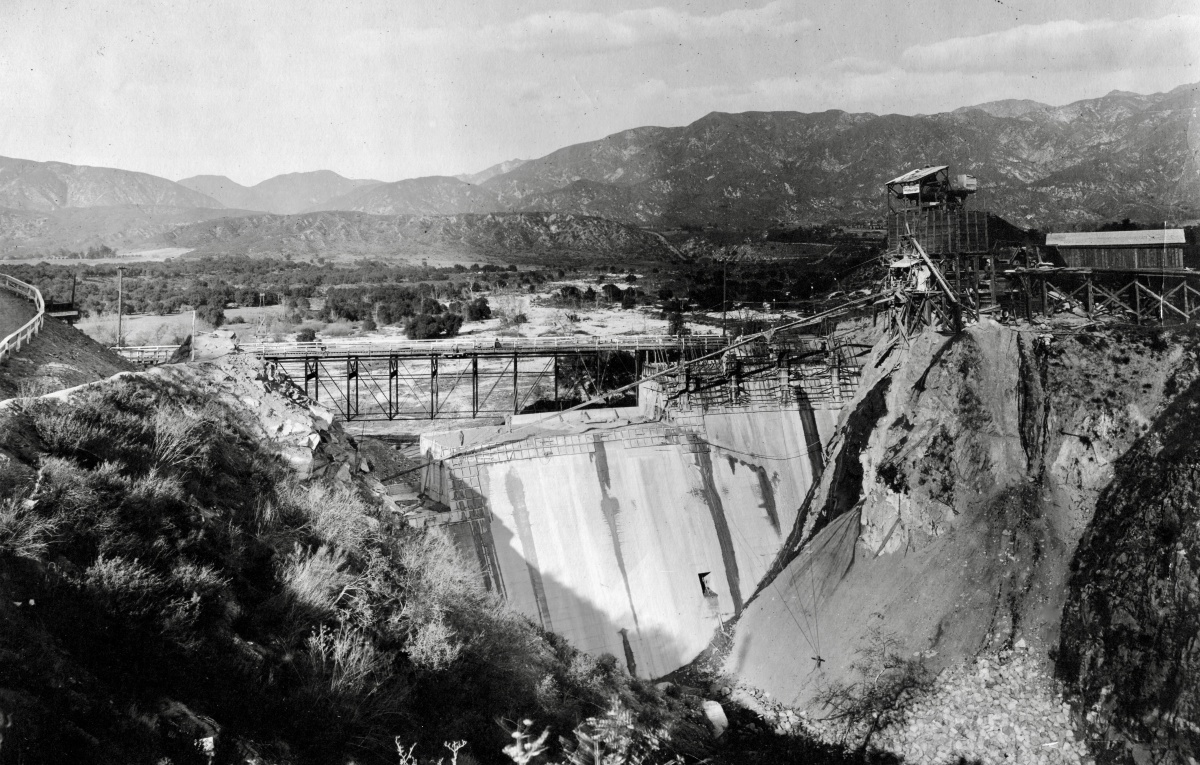
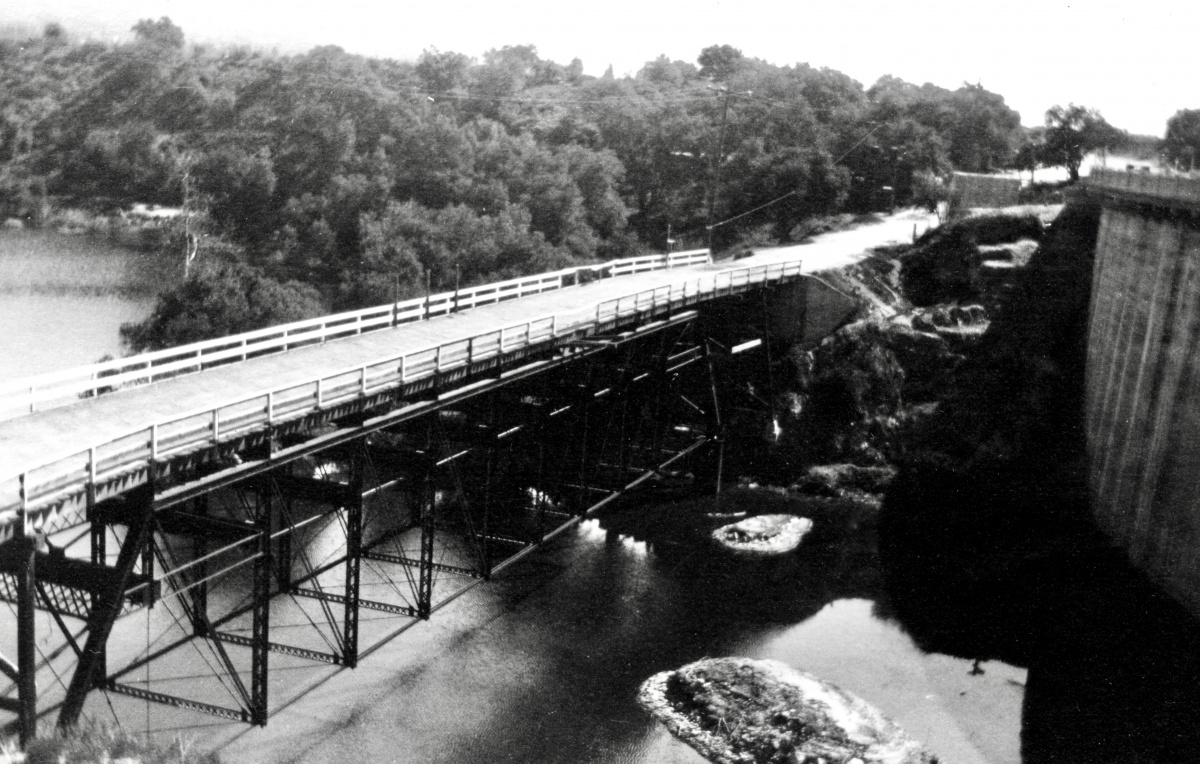
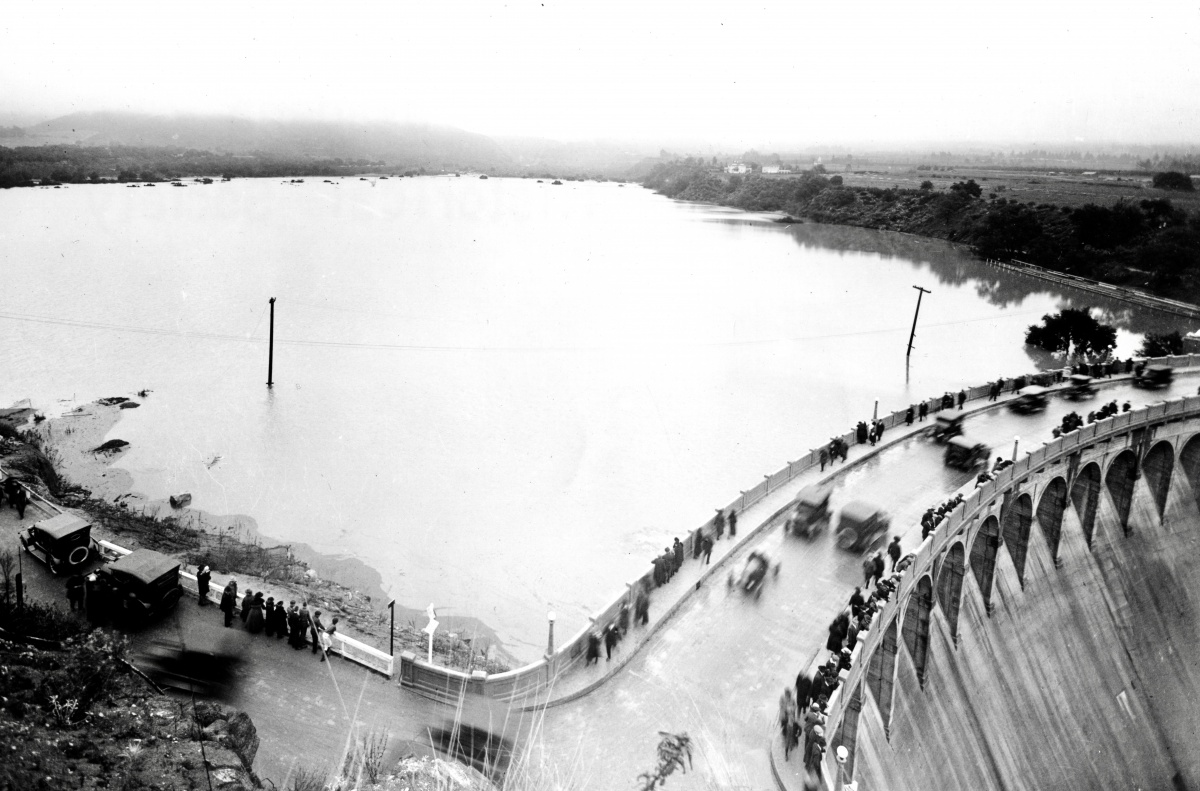
In 1938, historic high-level of storm water runoff collects behind Devil’s Gate Dam covering everything except for the two telephone poles.
Today, Devil’s Gate has become a major transportation corridor: 210 freeway, Devil’s Gate Dam (closed to automobile traffic but still accessible to equestrians, bicyclists, and hikers), and a third bridge directly in front of the dam.
Note: The historic “first bridge” was demolished during the 1920s. However, its original concrete footings have survived and are easily accessible today behind Devil’s Gate Dam.
Throwback Thursday is written and produced by Rick Thomas

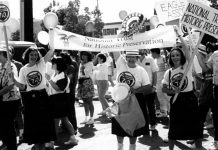

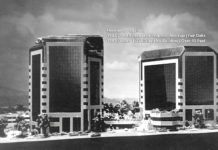











.png)






